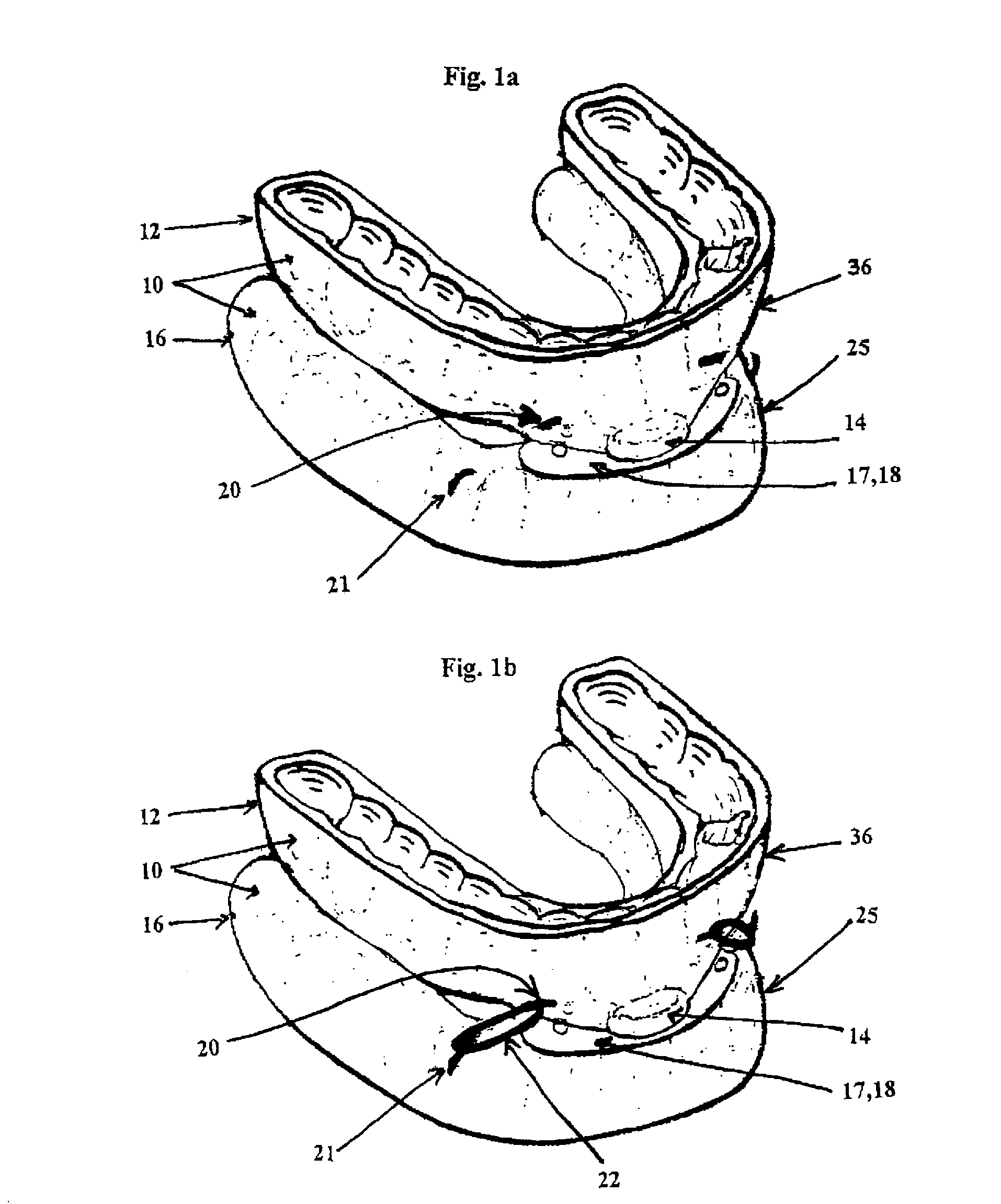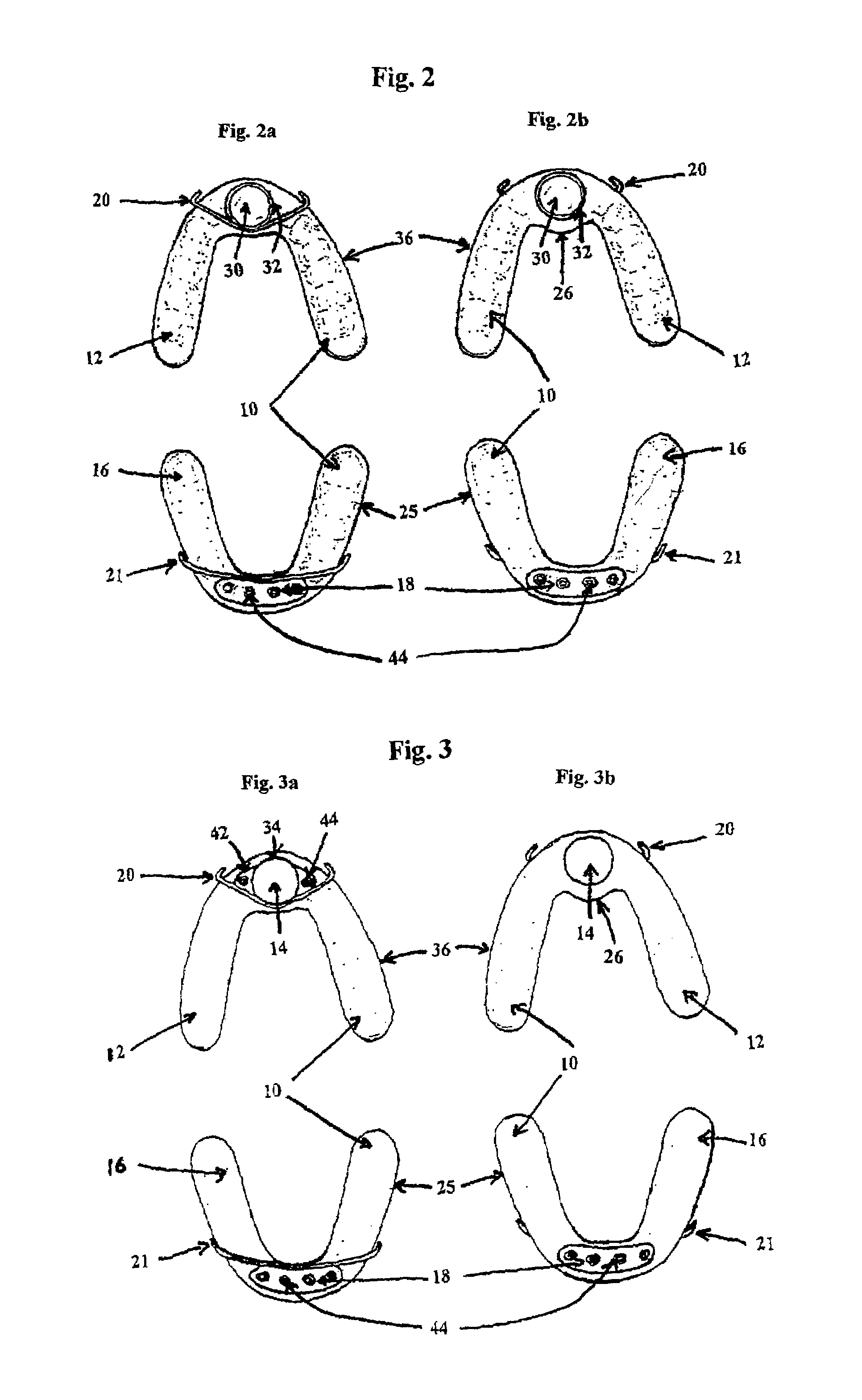Magnetic dental appliance
a magnetic dental appliance and magnet technology, applied in the field of magnetic dental appliances, can solve the problemsaffecting patient compliance, and affecting the comfort of patients, so as to achieve the effect of reducing the contractile strength and activity of the elevator muscles, reducing the stress on the elevator muscles, and reducing the separation of posterior teeth
- Summary
- Abstract
- Description
- Claims
- Application Information
AI Technical Summary
Benefits of technology
Problems solved by technology
Method used
Image
Examples
Embodiment Construction
[0063]Generally, the present invention provides a magnetic dental appliance suitable for altering the relative mutual positioning of the jaws, and in a preferred embodiment, for advancing the mandible of a subject in need thereof. Altering the position and bite of the jaw is known to provide relief to patients suffering from TMJ pain and inflammation, myofascial pain, headaches and bruxism. Mandibular advancement is known to provide relief to patients suffering from various conditions including, but not limited to, snoring, obstructive sleep apnea, TMJ pain and inflammation, myofascial pain, headaches and bruxism.
[0064]Additional uses of the magnetic dental appliance of the present invention are the concomitant treatment of bruxism with the treatment of snoring and obstructive sleep apnea, where required. The treatment of myofascial pain dysfunction syndrome (MPDS) as well as extracapsular TMJ problems, such as retrodiscitis and capsulitis, can also be accomplished with this device....
PUM
 Login to View More
Login to View More Abstract
Description
Claims
Application Information
 Login to View More
Login to View More - R&D
- Intellectual Property
- Life Sciences
- Materials
- Tech Scout
- Unparalleled Data Quality
- Higher Quality Content
- 60% Fewer Hallucinations
Browse by: Latest US Patents, China's latest patents, Technical Efficacy Thesaurus, Application Domain, Technology Topic, Popular Technical Reports.
© 2025 PatSnap. All rights reserved.Legal|Privacy policy|Modern Slavery Act Transparency Statement|Sitemap|About US| Contact US: help@patsnap.com



